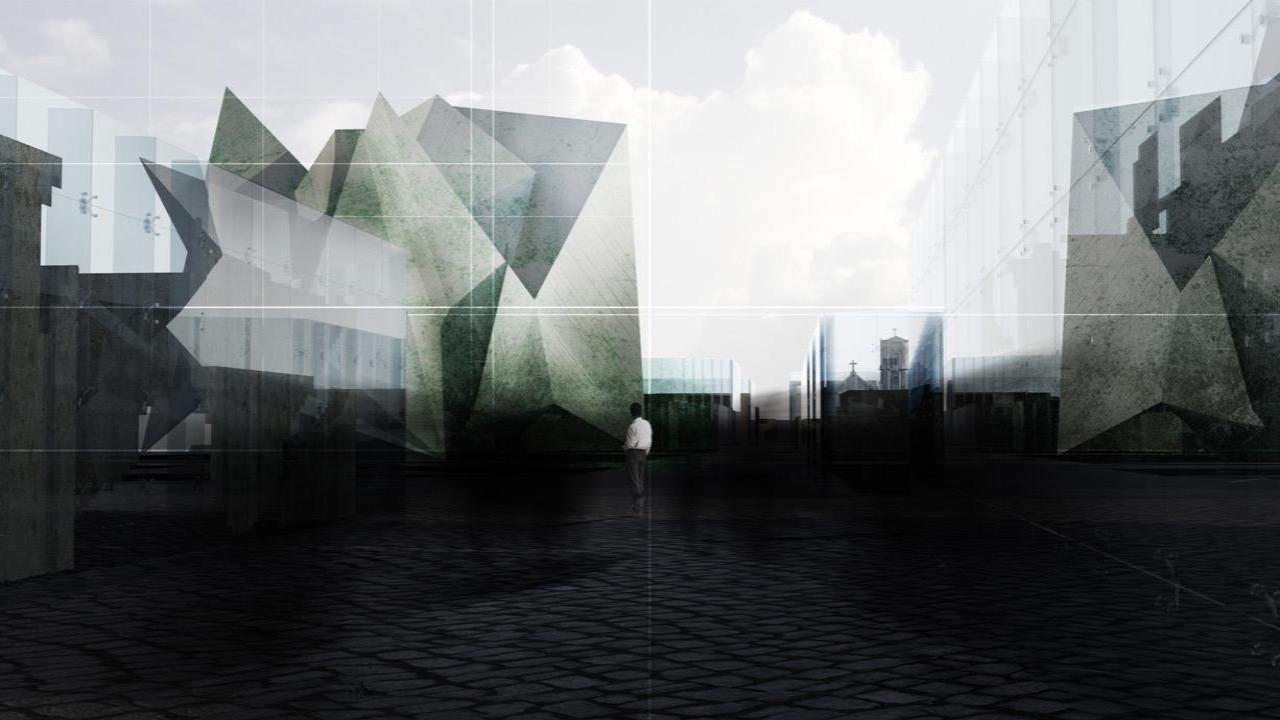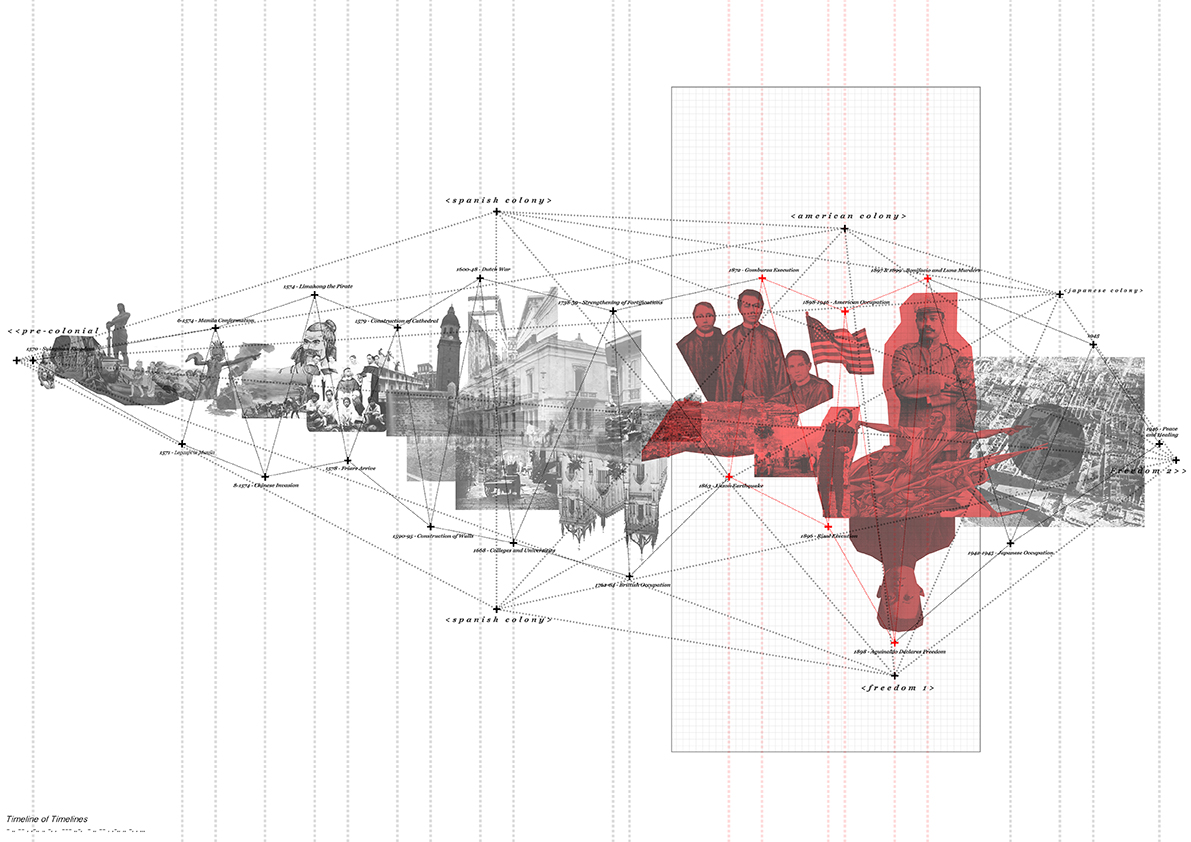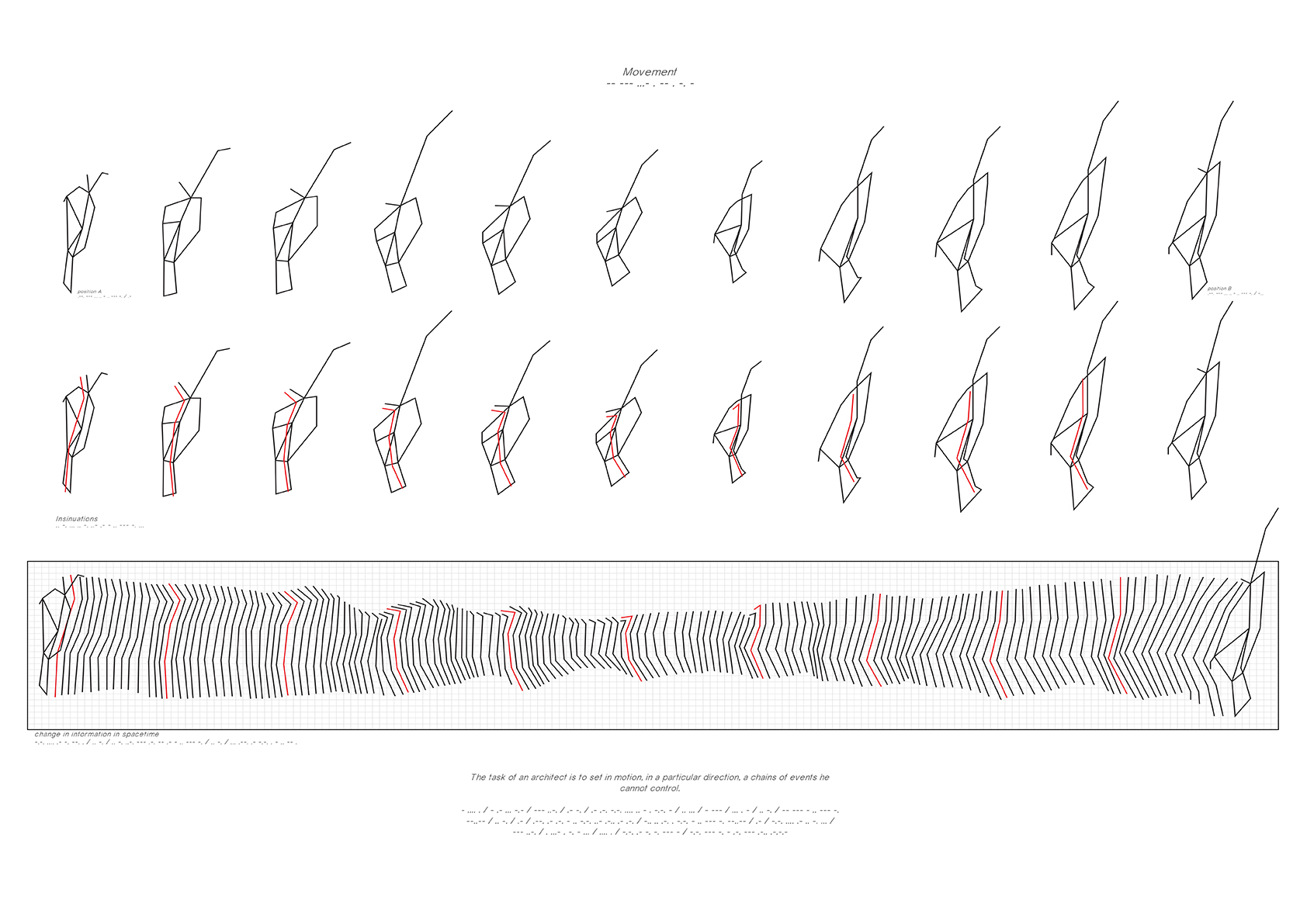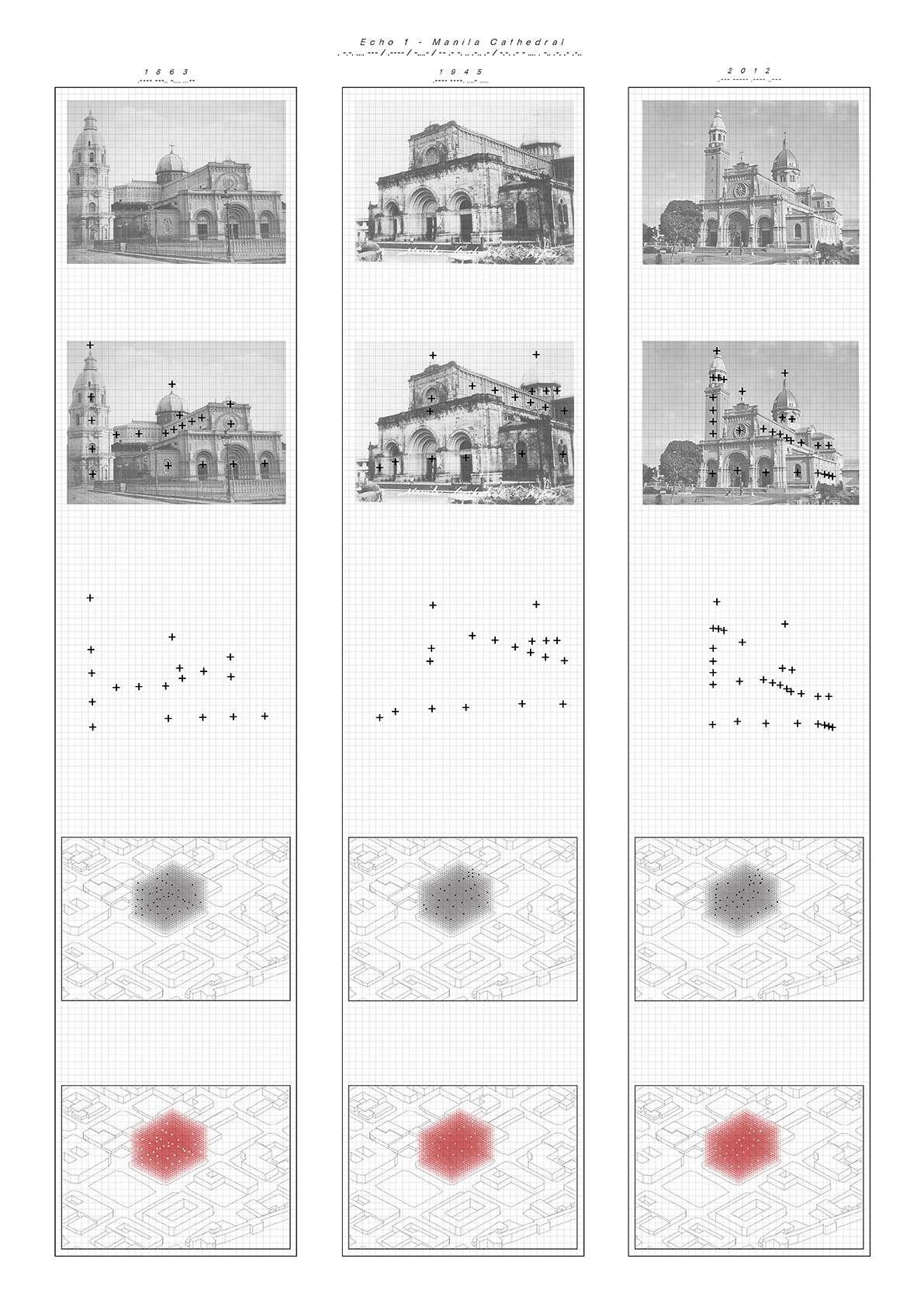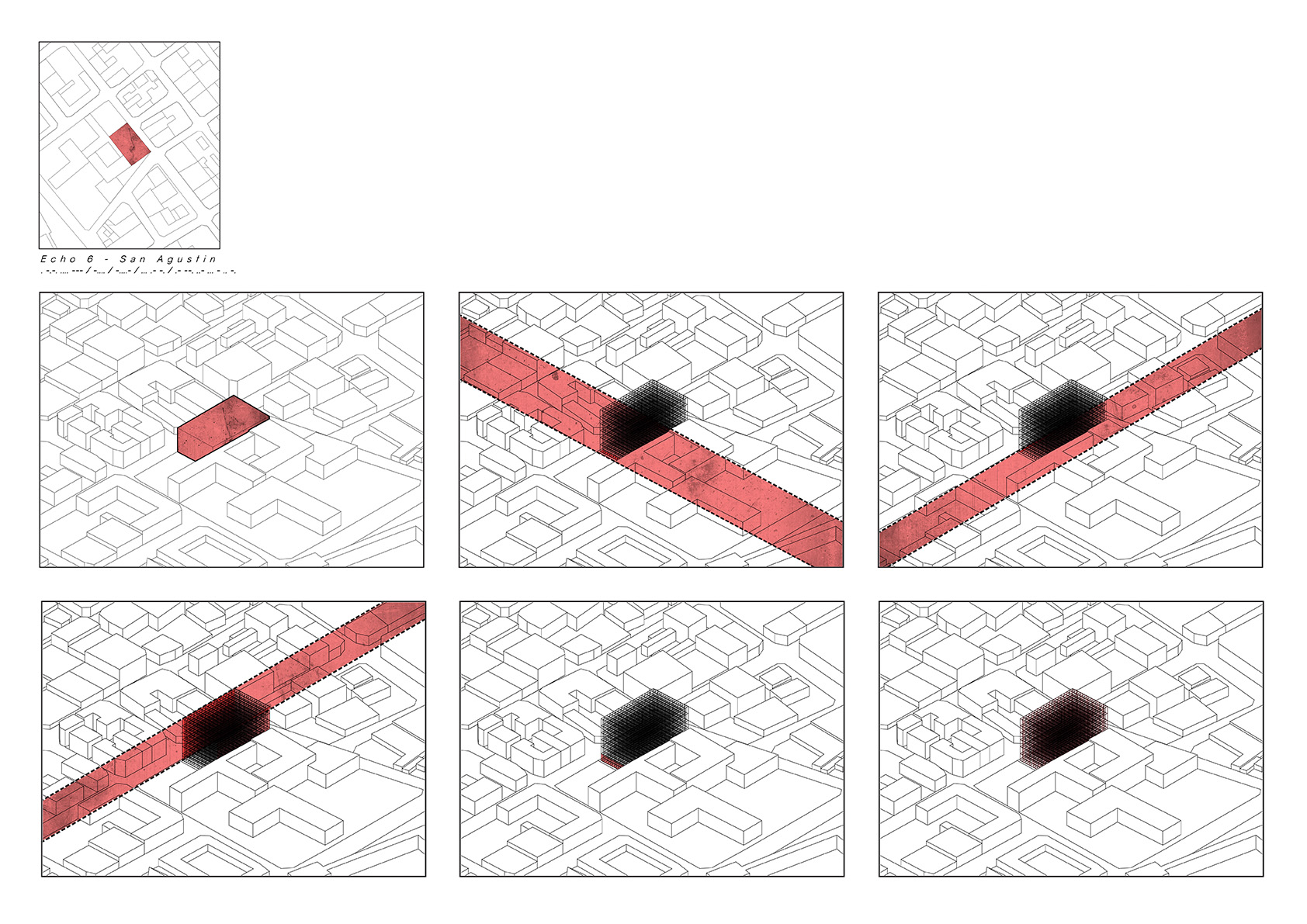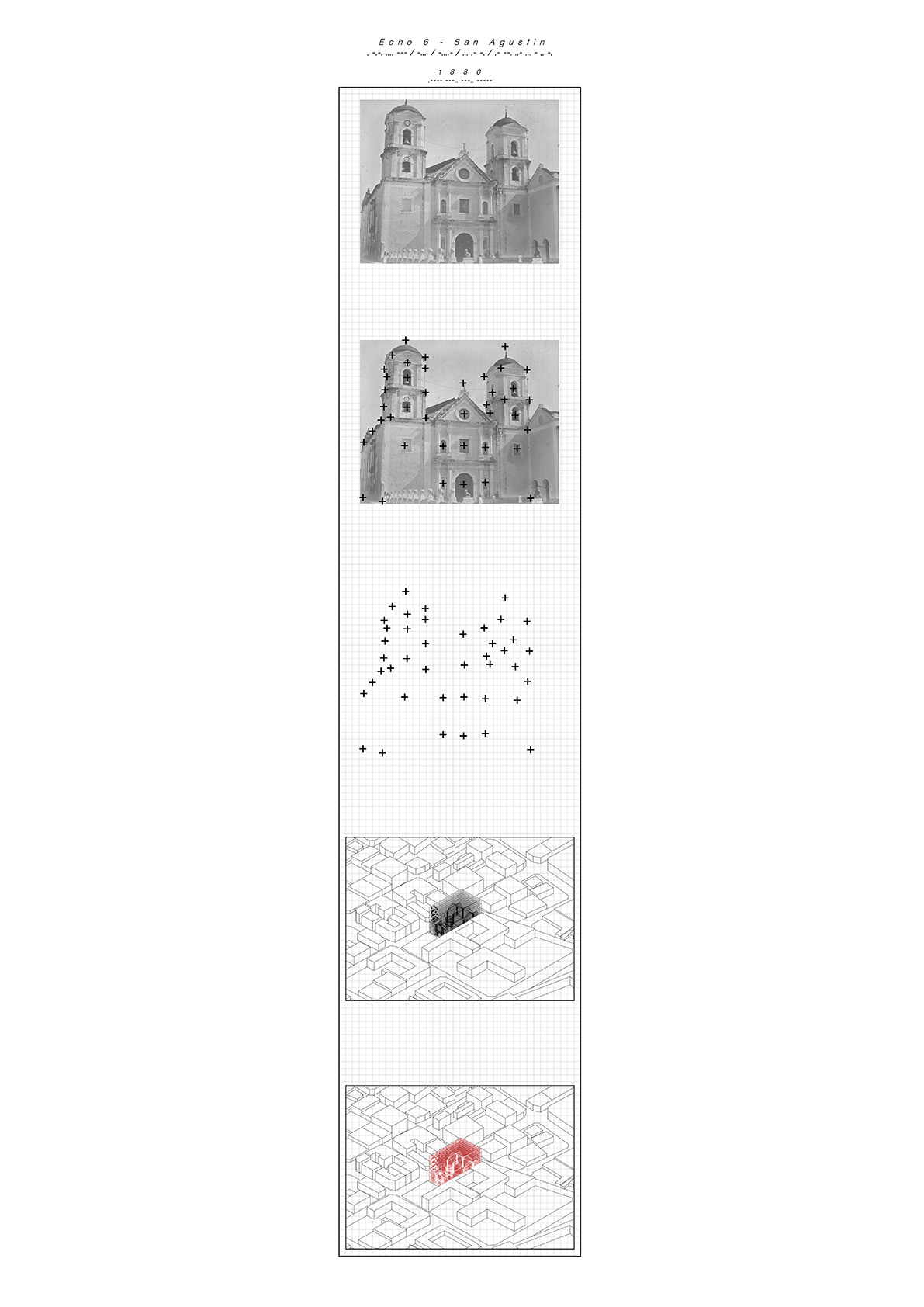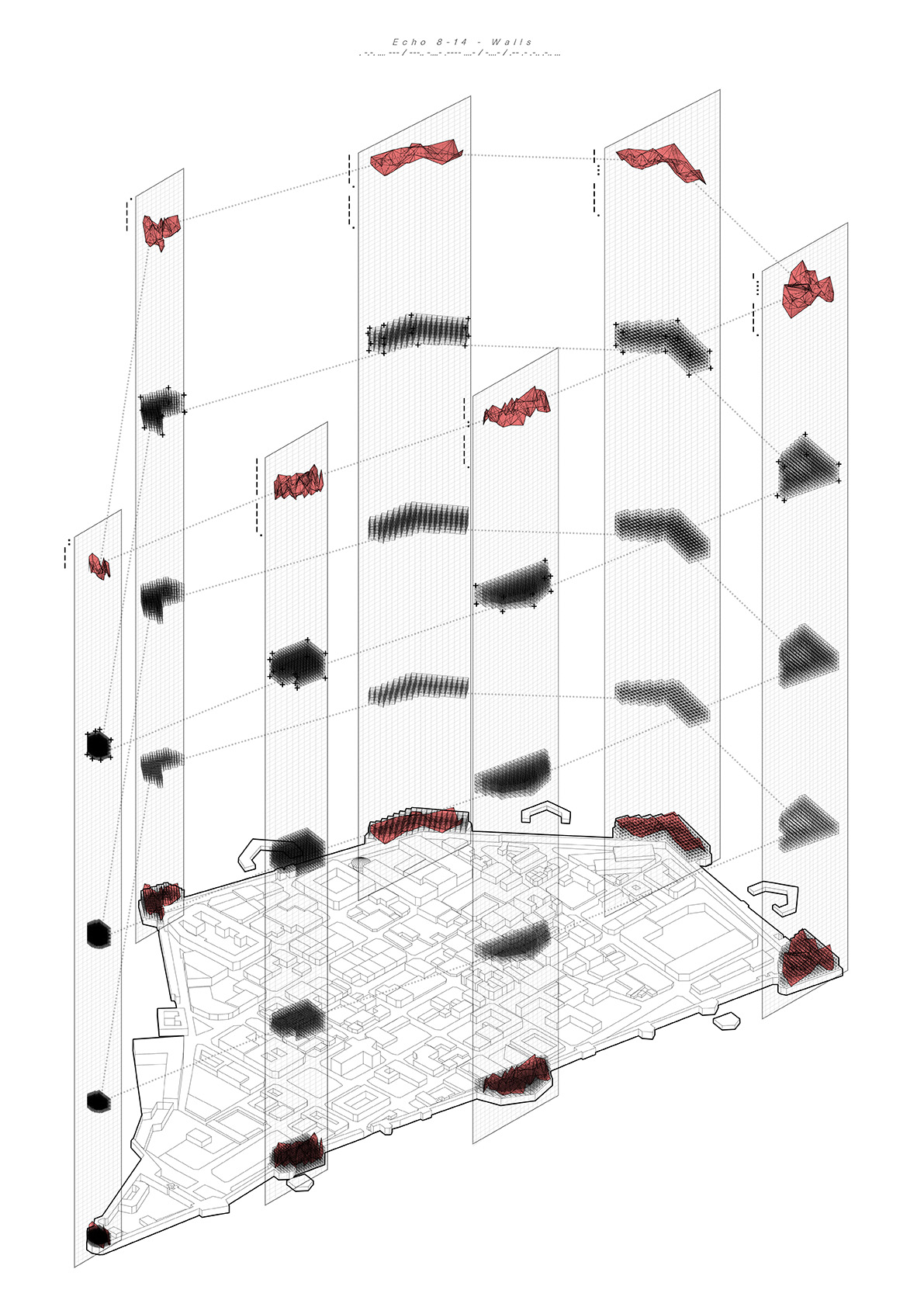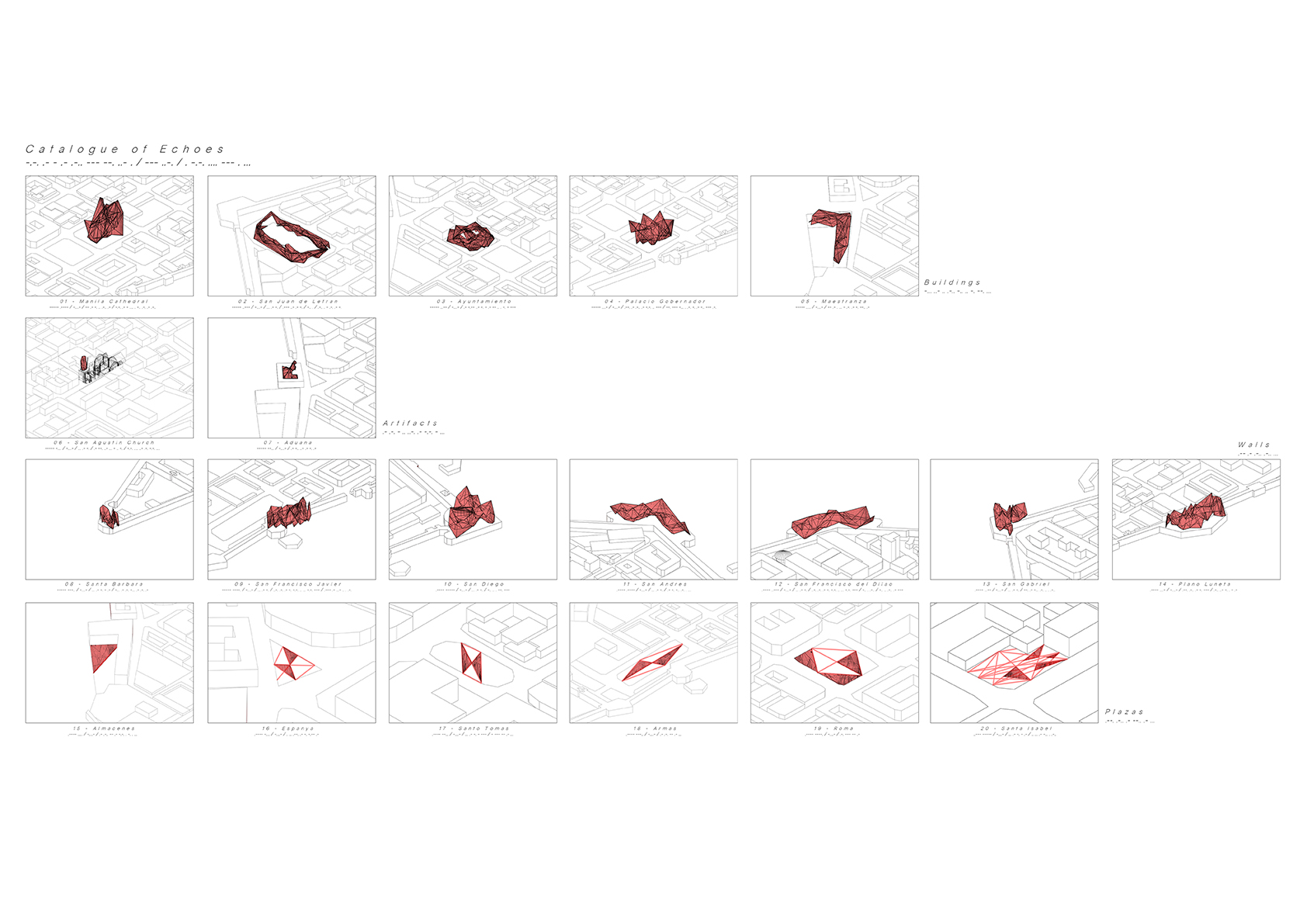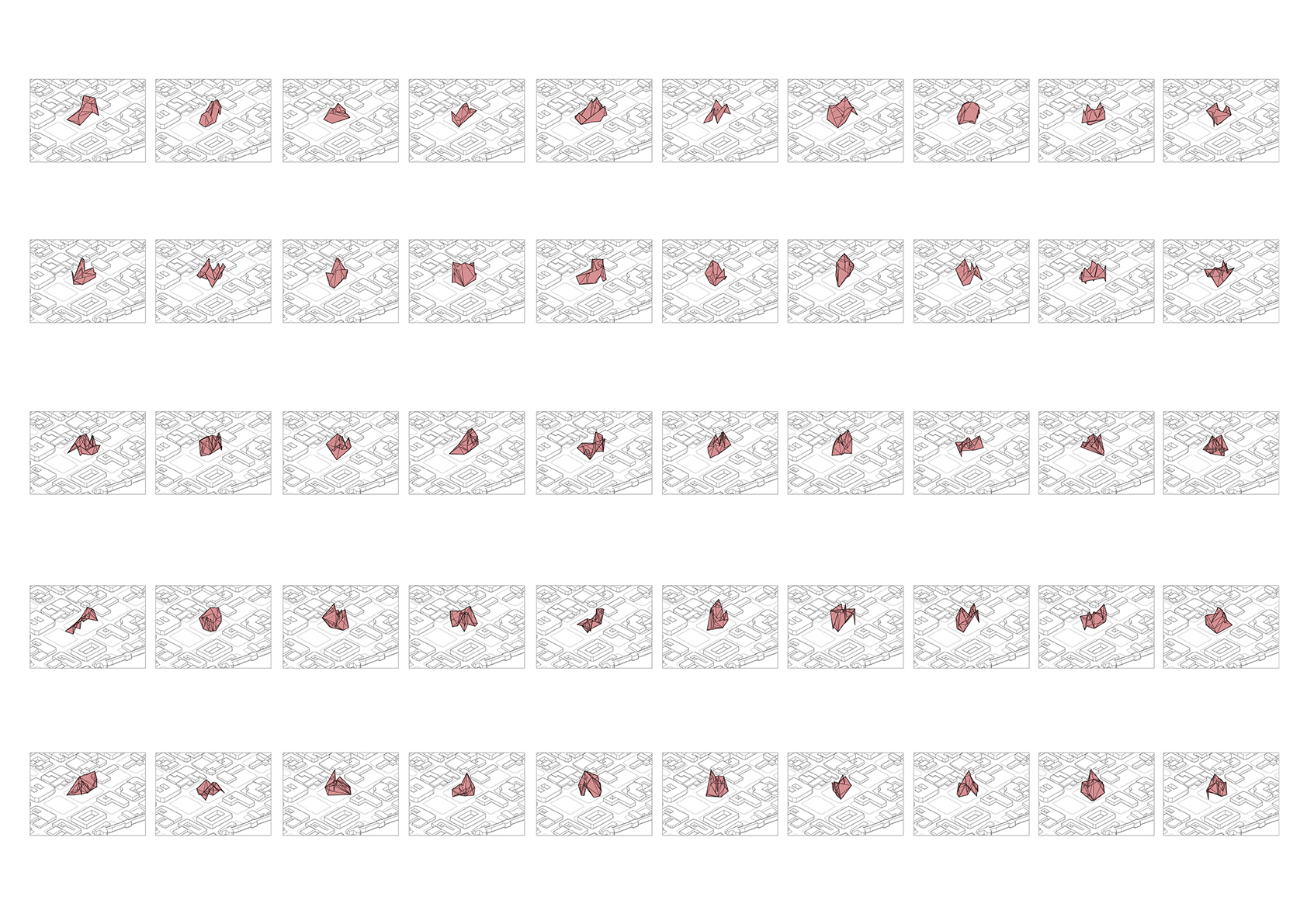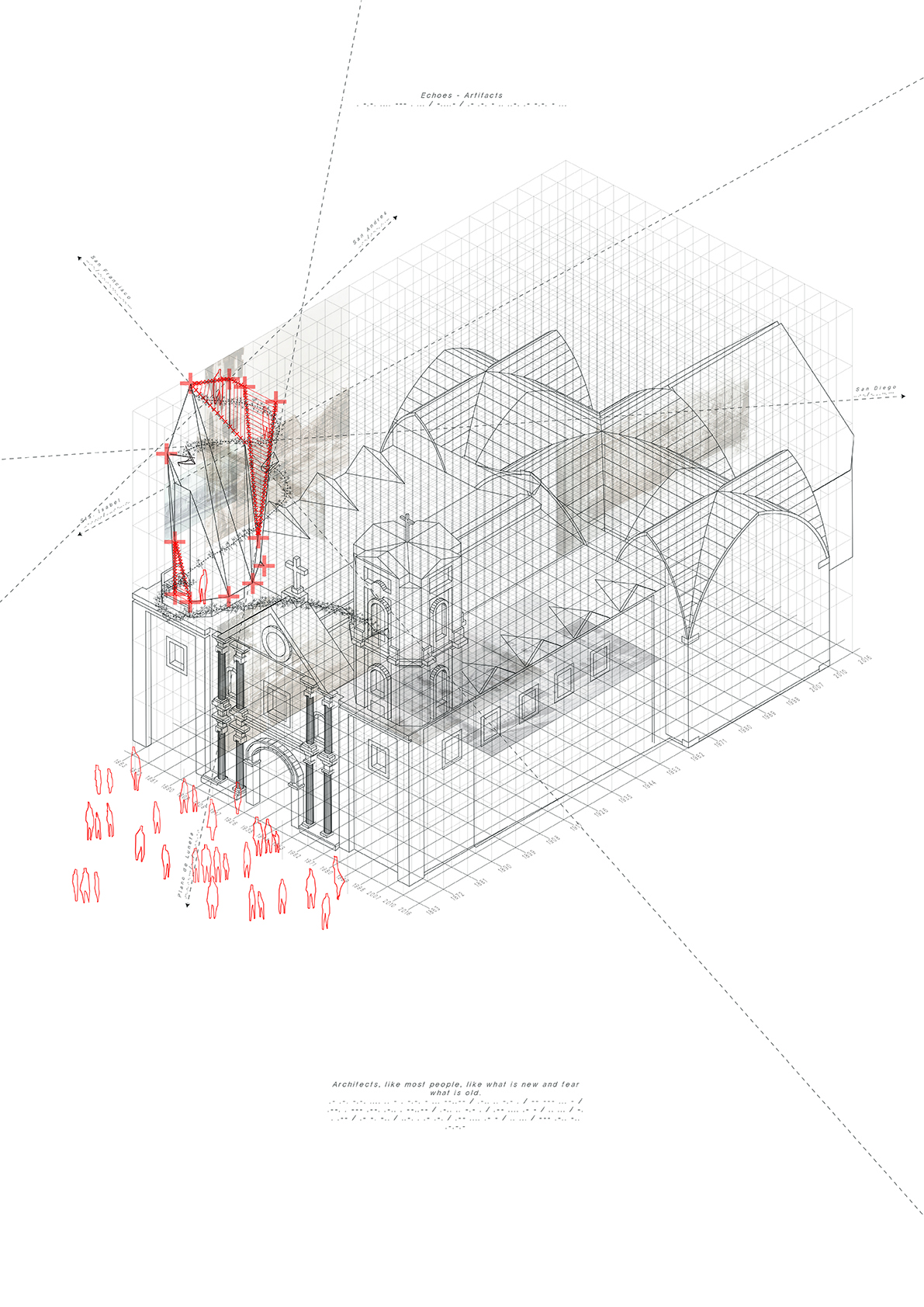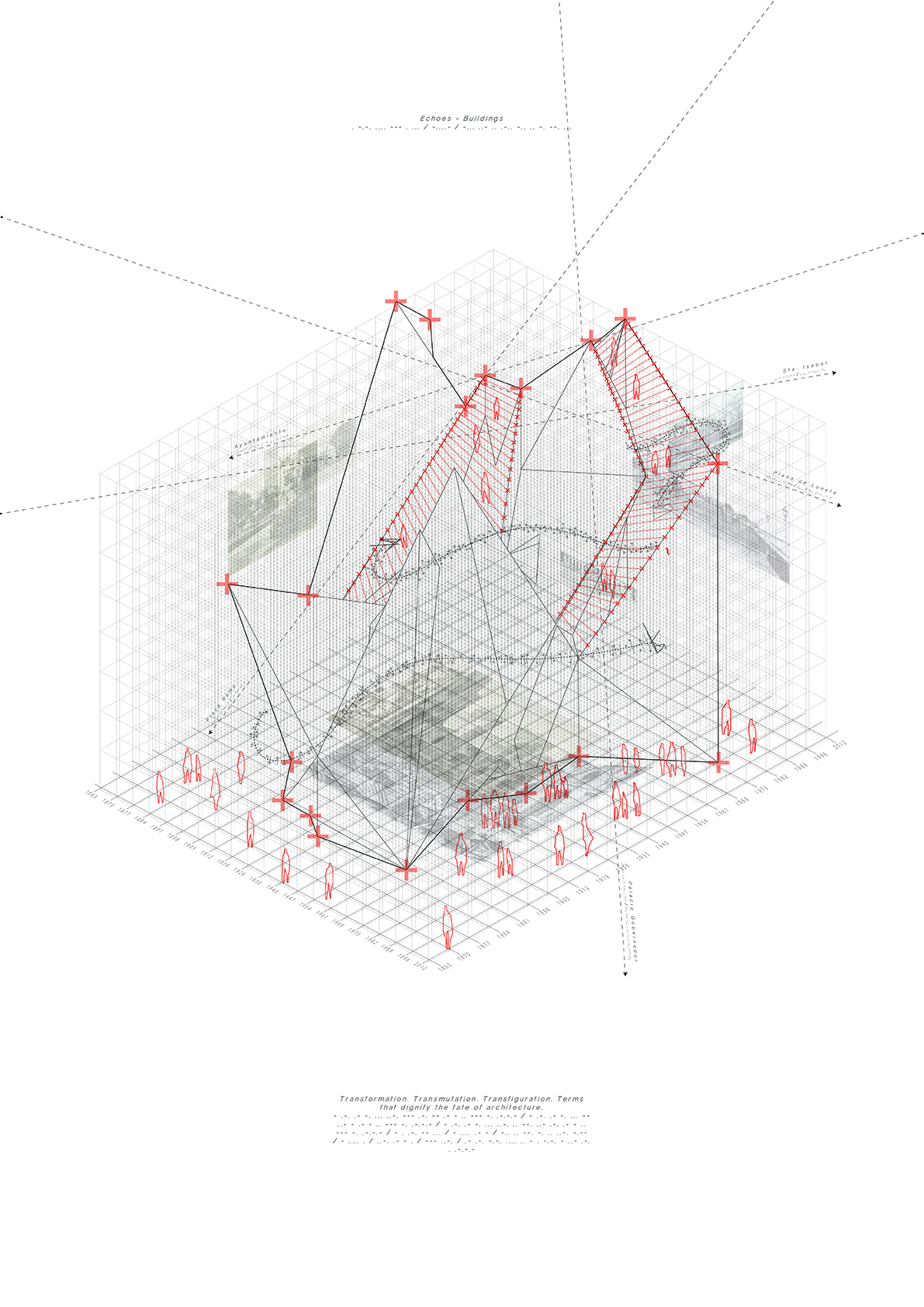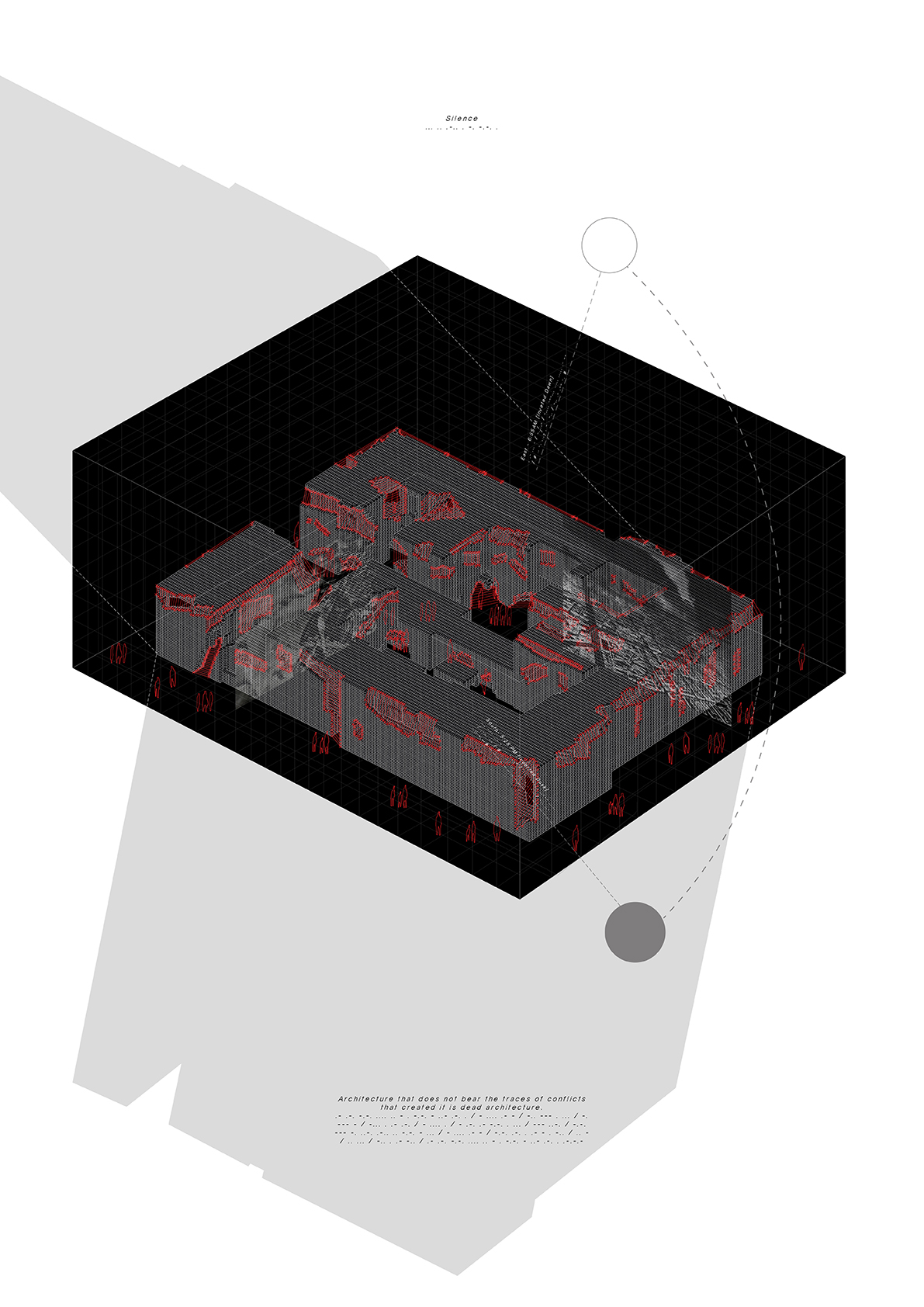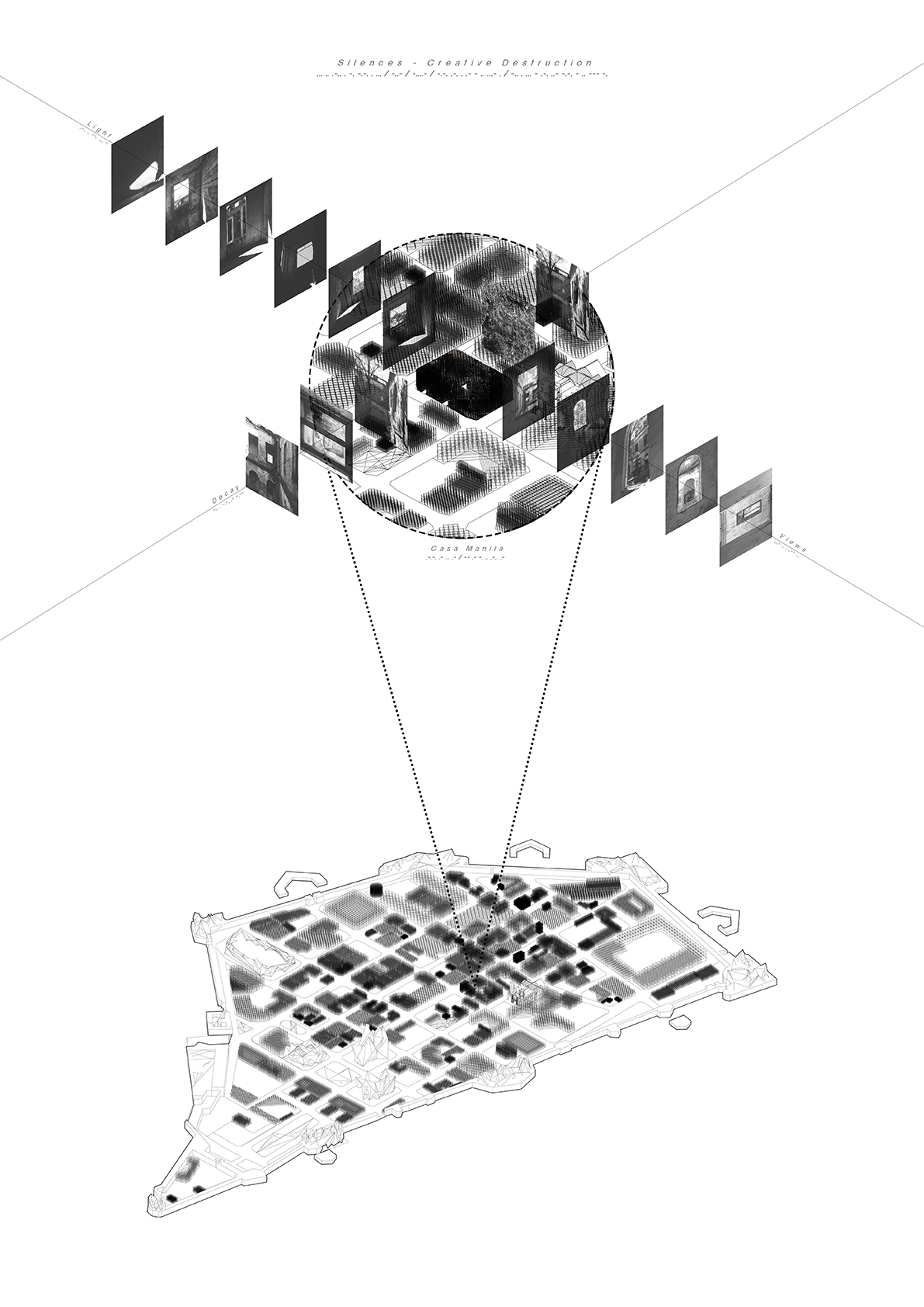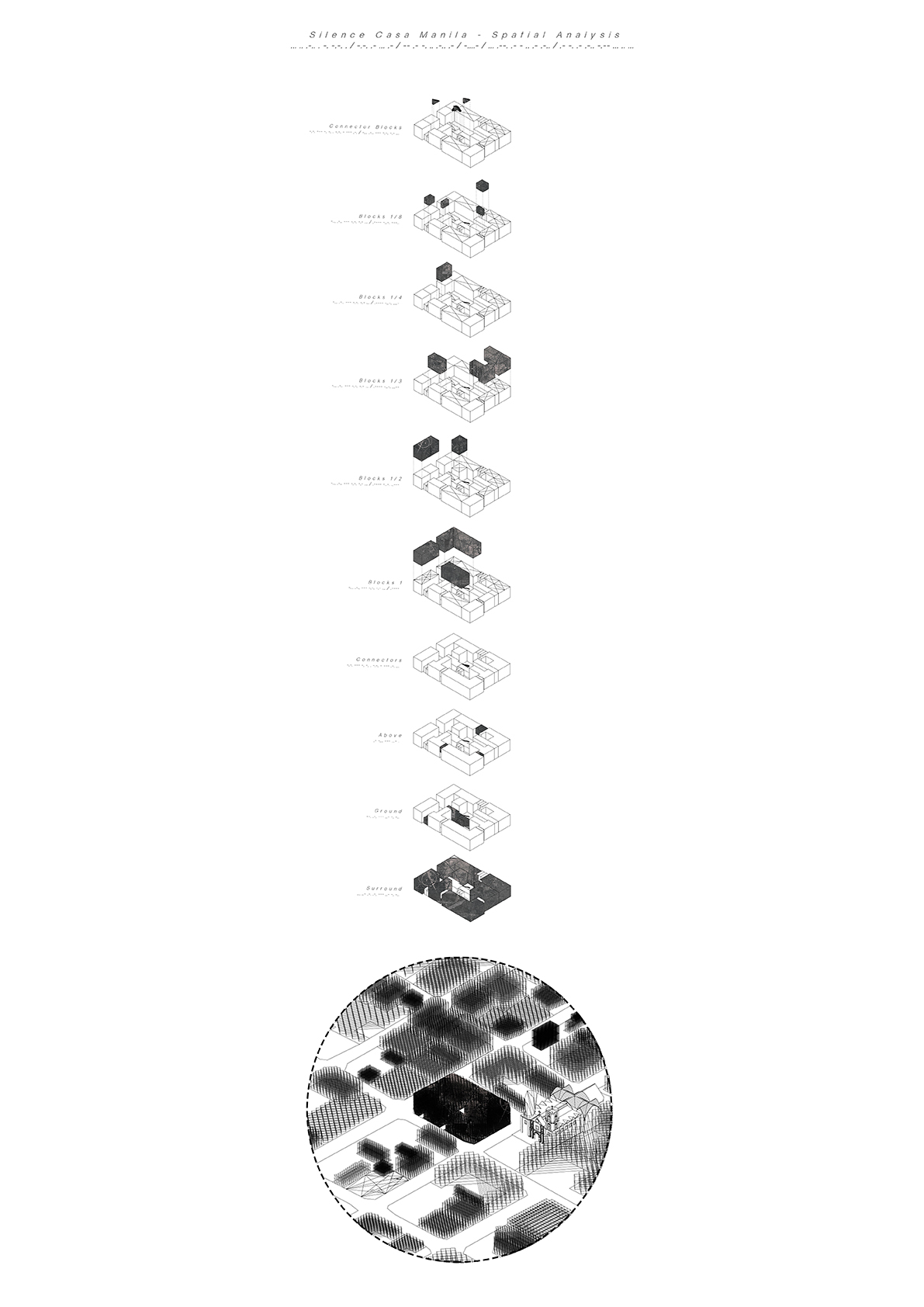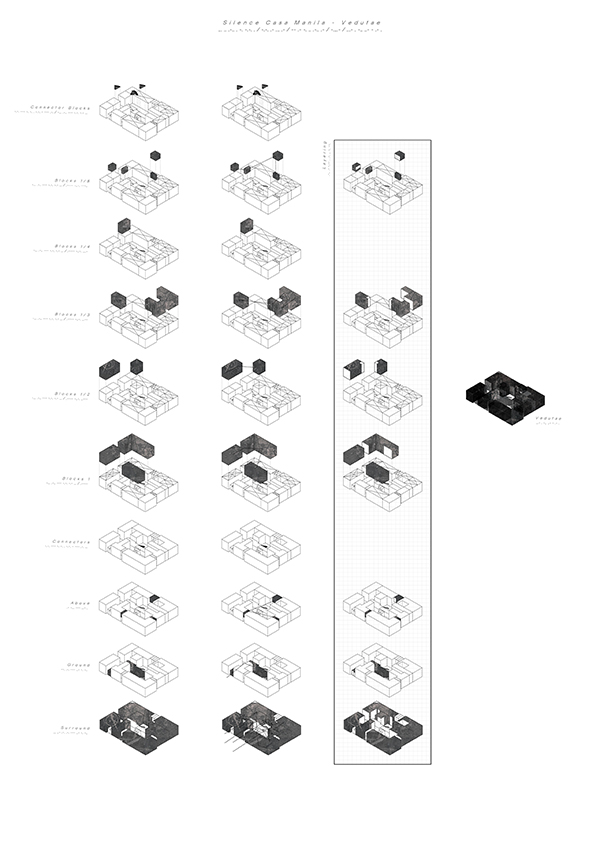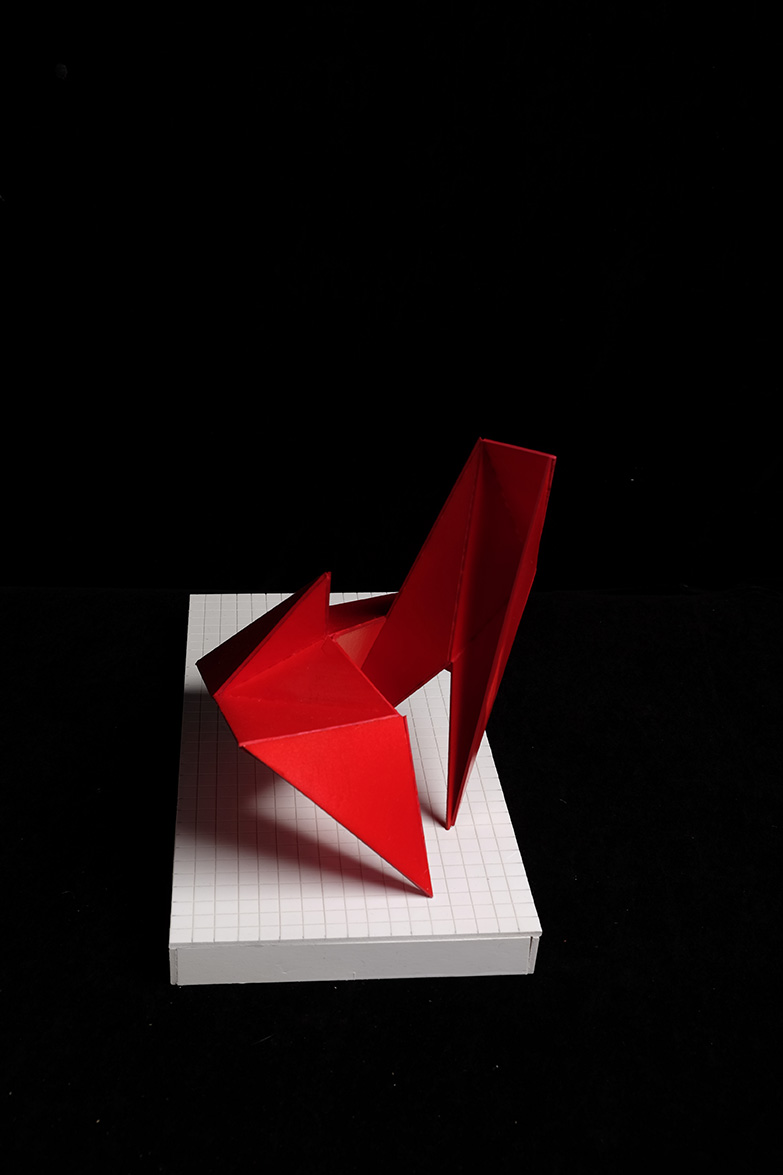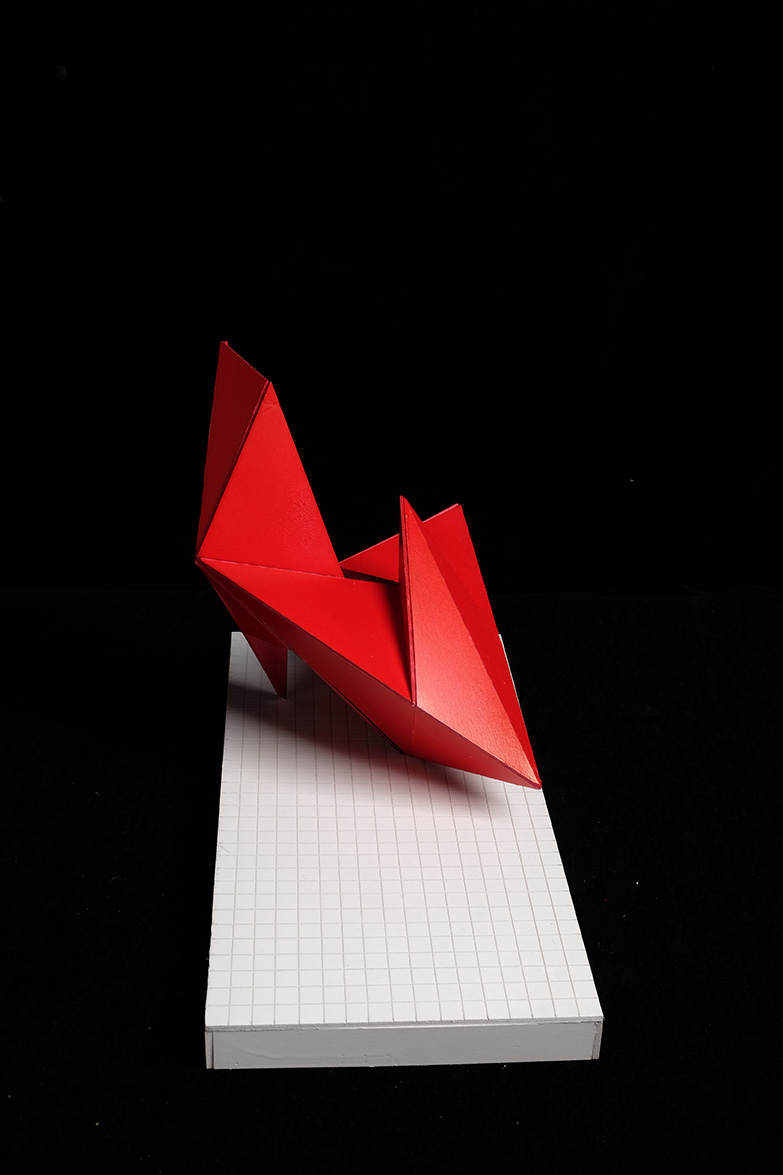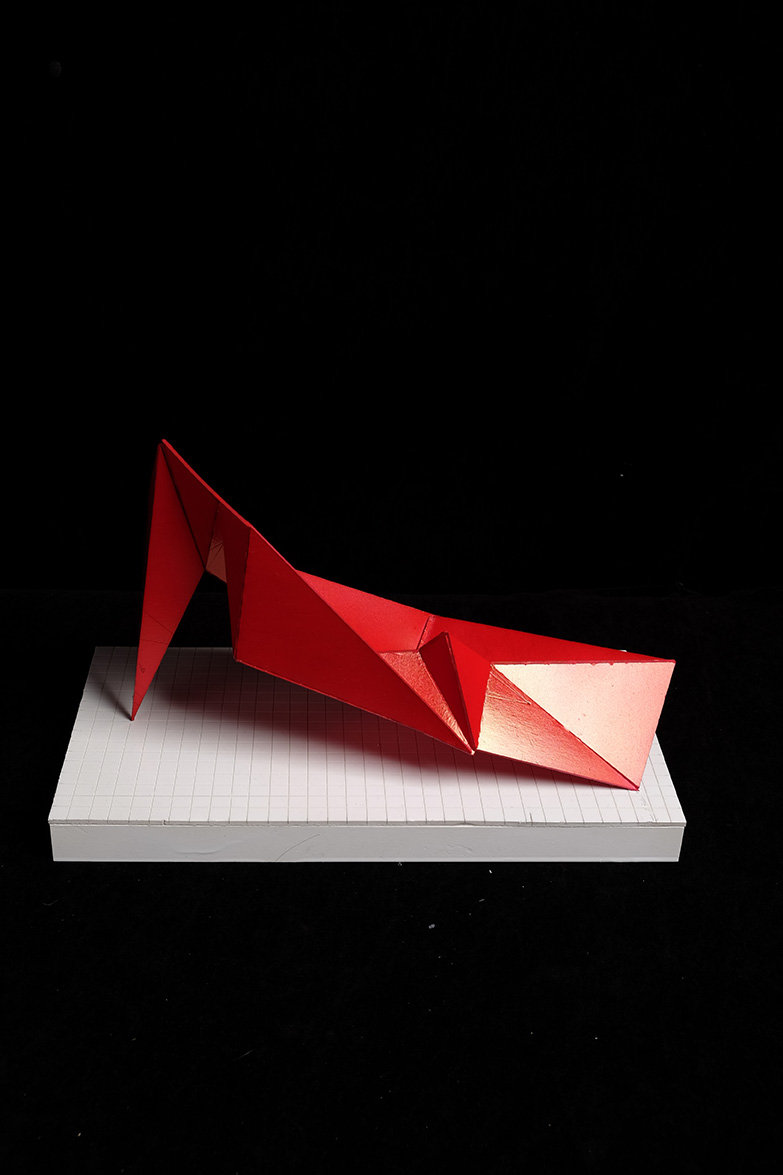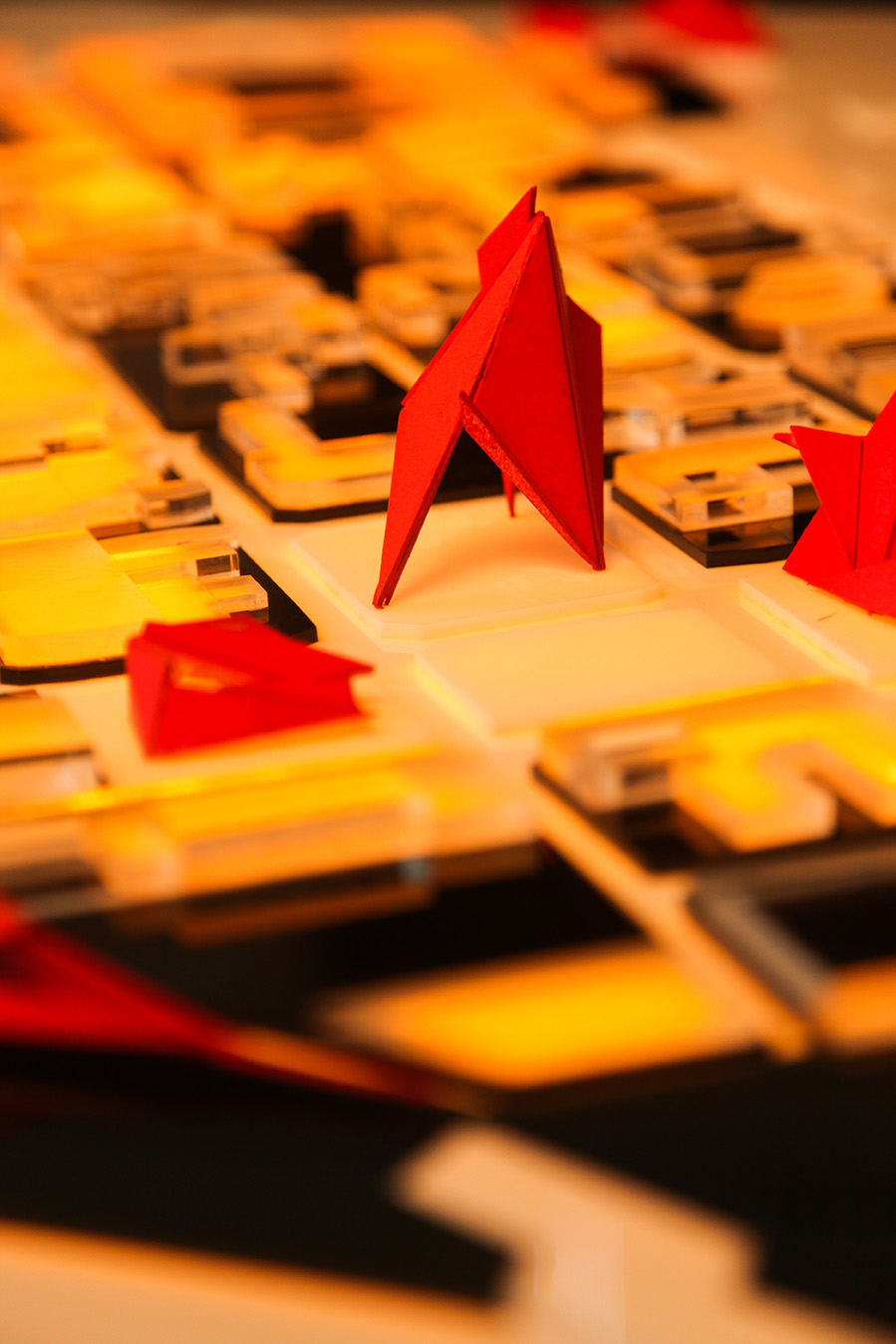PROJECT BRIEF AND MANIFESTO – 20E_S
Intramuros is the historic core of Metro Manila. It is contained with a number of architectural precedents that have accumulated through the events (colonization, festivities, war, everyday instances) that occurred since the existence of this walled city. The city has evolved throughout the years, completing its own cycle of life.
The war in 1945 destroyed almost 90% of the buildings inside Intramuros, leaving only traces of what the city used to be. Because of this immediate loss of centuries’ worth of memories, the Filipinos have clung to strong sensation of nostalgia and started treating the past as a romantic dimension. Because of this, the past is then treated as a “dictionary of forms” and history’s meaning was reduced to the physical and material aspect of the city, neglecting almost all of the dimensions that created and shaped Intramuros as a city.
Architecture in Intramuros exhibits a skin deep understanding of history through its imitation of historical forms and thus neglecting the essence of being a historic district. Memory could be used as a means of translating the historical events of the past to the ever-changing and dynamic condition of the present and the cold uncertain future.
The concept of the Active Memory, through the notion of Virtuality, became the main fuel for generating the new Intramuros in this thesis. Under the concept of Memory, there are two subcategories: Remembering and Forgetting which are the major parts of this study. The Remembering part of the study “echoed” the distant and the immediate past of some notable places in Intramuros through a comprehensive utilization of data and information and its translation to architecture. The Forgetting part of the study “silenced” the interstitial banality that is happening within the walled district through the idea of the Ruin. Both parts were subjected through comprehensive aleatoric design processes anchored on parametric design which constitutes the premise of memory as an idea of approximation rather than precision and accuracy. This became useful in translating data into an alchemic form of an architecture of concentration and in liberating architecture from its pre-conceived notion of historical precedents. The architecture of the new Intramuros should serve as a receptacle of possibilities and dynamic change and it should always reflect or contemplate upon the memory of the past.
//
In conclusion, architect should be conscious of his subconscious and thus describe or rather declare what he has done and what he has realized:
MANIFESTO OF THE ABSOLUTE
Time creates a radicality in spaces.
Architecture is radical.
Architecture is impermanent.
Architecture can grow into permanence, asymptotically, through radicality.
MANIFESTO OF THE AMBIGUOUS
Architecture exists independently on its own.
Architecture defines us.
We do not define Architecture.
We dictate architecture.
MANIFESTO OF THE PROCESS
We should define the ambiguous.
We should understand what is.
We should bridge the gap
–of what is architecture.

